

Articles
How Do You Stack Washer And Dryer
Modified: February 29, 2024
Learn how to stack your washer and dryer efficiently with our informative articles. Simplify your laundry room setup for maximum space utilization.
(Many of the links in this article redirect to a specific reviewed product. Your purchase of these products through affiliate links helps to generate commission for Storables.com, at no extra cost. Learn more)
Introduction
Stacking a washer and dryer is a practical and space-saving solution for many households. By vertically aligning these essential home appliances, you can maximize your available floor space while still enjoying the convenience of both a washer and dryer. In this article, we will explore the benefits of stacking washer and dryer units, the necessary preparations and considerations, the steps to properly stack them, securing the stacked units, troubleshooting common issues, and ultimately, how to make the most out of this arrangement.
For those living in apartments, condos, or smaller homes, finding room for a separate washer and dryer can be challenging. Stacking these appliances allows you to utilize vertical space instead of sacrificing valuable floor space. This can be especially beneficial in laundry rooms with limited square footage.
Furthermore, stacking a washer and dryer can also be a game-changer for those looking to create a more efficient and ergonomic laundry setup. By having the dryer positioned above the washer, you can eliminate the need for excessive bending and reaching when transferring clothes. This can be especially advantageous for individuals with mobility issues or back problems.
In addition to space-saving and ergonomic advantages, stacking washer and dryer units can also contribute to a cleaner and more organized laundry area. With the appliances neatly stacked, you can effectively utilize surrounding storage space for laundry supplies, such as detergent, fabric softener, and dryer sheets. This promotes a clutter-free environment and makes it easier to keep your laundry essentials within reach.
Before you start stacking your washer and dryer, it is important to be familiar with the necessary preparations and considerations. Properly assessing your laundry room’s dimensions, ensuring the compatibility of your appliances, and following manufacturer guidelines are essential steps to set yourself up for a successful stacking process. In the next section, we will delve into these preparations in more detail.
Key Takeaways:
- Stacking a washer and dryer maximizes space, enhances organization, and improves accessibility in your laundry area. Proper installation and maintenance ensure efficient performance and a streamlined laundry routine.
- By following manufacturer guidelines, addressing common issues, and securing the stacked units, you can enjoy the benefits of a space-saving and efficient laundry setup. Embrace the convenience and functionality of stacked washer and dryer units in your home.
Read more: How To Stack Washer And Dryer
Benefits of Stacking Washer and Dryer
Stacking a washer and dryer offers several advantages that make it a popular choice for many homeowners and renters. Here are some of the key benefits:
- Space Savings: The most obvious benefit of stacking washer and dryer units is the space-saving aspect. By stacking the appliances vertically, you can make the most out of limited floor space, which is particularly valuable in smaller homes, apartments, or laundry closets. It allows you to have both a washer and dryer without sacrificing other areas of your living space.
- Ergonomic Design: With a stacked washer and dryer, you can eliminate the need for excessive bending and reaching. By placing the dryer on top of the washer, you can easily transfer clothes without straining your back. This arrangement can be especially beneficial for individuals with mobility issues or physical limitations.
- Improved Organization: Stacking washer and dryer units can help create a more organized and streamlined laundry area. With the appliances aligned vertically, you can free up valuable floor space and utilize surrounding storage areas more efficiently. This allows for better organization of laundry supplies, such as detergent, fabric softener, and dryer sheets.
- Energy Efficiency: Stacked washer and dryer units often come in compact designs that require less energy to operate. The smaller size of these appliances can result in lower energy consumption, saving you money on utility bills over time.
- Flexible Installation: Stacking washer and dryer units offer flexibility when it comes to installation options. Whether you have a dedicated laundry room or a compact laundry area, the vertical arrangement of stacked appliances allows for versatile placement. You can place them side by side, in a closet, or even in a bathroom, depending on your specific needs and available space.
- Convenience: Having a washer and dryer conveniently stacked together saves you time and effort. You can easily transfer the laundry load from the washer to the dryer without the need to carry it elsewhere, resulting in a more streamlined laundry routine.
Overall, stacking a washer and dryer provides a practical solution for those looking to optimize space and enhance the functionality of their laundry area. By considering the numerous benefits, you can determine if this arrangement is the right choice for your needs and lifestyle.
Necessary Preparations and Considerations
Before you begin the process of stacking your washer and dryer, there are several important preparations and considerations to keep in mind. These steps will help ensure a successful and safe installation:
- Measure Your Space: It’s crucial to measure your laundry area to ensure that the stacked washer and dryer will fit properly. Take accurate measurements of the height, width, and depth of the space where you intend to place the appliances.
- Check Appliance Compatibility: Verify that your washer and dryer models are stackable. Not all washers and dryers can be stacked, so consult the manufacturer’s guidelines or check the product specifications to confirm compatibility.
- Consider Weight Limitations: Take into account the weight limitations specified by the manufacturer. Make sure that the structure supporting the stacked units is capable of handling their combined weight without risk of collapse or damage.
- Ensure Proper Ventilation: Check if your dryer requires external ventilation. Ensure that you have the necessary space and access to a vent for proper air circulation. Improper ventilation can lead to overheating or reduced performance of the dryer.
- Allow for Accessibility: Consider the accessibility of the controls, doors, and lint trap when the units are stacked. Ensure that you have easy access to these essential components for regular use, maintenance, and cleaning.
- Follow Manufacturer Guidelines: It is crucial to follow the manufacturer’s instructions and guidelines for stacking your specific washer and dryer models. These guidelines outline the proper stacking procedures, provide safety instructions, and help prevent any damage to the appliances.
- Secure the Area: Clear any clutter or obstructions around the laundry area to create a safe and secure space for the stacked units. Ensure that the floor is level and stable to avoid any imbalance or movement during operation.
- Consider Noise and Vibration: Stacking a washer and dryer may result in increased noise and vibration. Install anti-vibration pads or mats underneath the units to minimize the transfer of noise and vibrations to the surrounding area.
By taking these necessary preparations and considerations into account, you can ensure a smooth and hassle-free stacking process. Remember to always refer to the manufacturer’s guidelines for your specific models to ensure a safe and successful installation.
Steps to Properly Stack Washer and Dryer
Once you have completed the necessary preparations and considerations, you can proceed with the steps to properly stack your washer and dryer. Follow these guidelines to ensure a safe and secure installation:
- Disconnect and Unplug: Begin by disconnecting both the washer and dryer from their respective power sources. Unplug the appliances and ensure that there is no electrical connection before moving forward.
- Remove Any Accessories: Remove any accessories, such as storage drawers or stacking kits, from the washer and dryer. Set them aside for reinstallation later.
- Position the Washer: Carefully position the washer in the desired location. Use caution to avoid scratching or damaging the floor during the process.
- Install Stacking Kit: If your washer and dryer require a stacking kit, install it according to the manufacturer’s instructions. This kit will provide the necessary hardware and support to secure the stacked units together.
- Align the Washer and Dryer: Once the stacking kit is in place, align the dryer on top of the washer. Ensure that the edges and corners are properly lined up.
- Secure the Units: Use the provided hardware or brackets to secure the stacked washer and dryer together. Follow the manufacturer’s guidelines for proper attachment and tightening of the fasteners.
- Reinstall Accessories: If you had removed any accessories earlier, now is the time to reinstall them. This includes any storage drawers or kits that came with your washer and dryer.
- Level the Units: Use a level to ensure that the stacked washer and dryer are balanced and level. Adjust the leveling feet if necessary to achieve an even and stable setup.
- Connect Utilities: Reconnect and secure the necessary utility connections, such as water supply hoses, drain hoses, and ventilation ducts, following the manufacturer’s instructions.
- Test and Inspect: Once everything is in place, plug both the washer and dryer into their respective power sources. Test the functionality of both appliances to ensure that they are working properly. Inspect for any leaks, unusual noises, or other issues that may arise.
Always remember to refer to the specific instructions provided by the manufacturer for your washer and dryer models. Following these guidelines will help ensure a proper and safe stacking of your appliances, allowing you to enjoy the benefits of a space-saving and efficient laundry setup.
When stacking a washer and dryer, make sure to use a stacking kit designed for your specific models to ensure stability and safety. Always follow the manufacturer’s instructions for proper installation.
Securing the Stacked Washer and Dryer
Securing the stacked washer and dryer is a crucial step to ensure stability, safety, and optimal performance. When installed properly, a securely stacked unit can prevent accidents and damage. Follow these steps to effectively secure your stacked washer and dryer:
- Use a Stacking Kit: If your washer and dryer come with a stacking kit, make sure to use it. The stacking kit typically includes brackets, screws, and other hardware designed specifically for securing the appliances together.
- Read the Manufacturer’s Instructions: Refer to the manufacturer’s instructions for your specific washer and dryer models. These instructions will provide detailed guidance on how to properly secure the stacked units.
- Attach the Brackets: Install the brackets according to the manufacturer’s instructions. Typically, the brackets will be attached to the rear or sides of the washer and dryer, aligning them securely.
- Tighten the Fasteners: Use the provided screws or fasteners to securely tighten the brackets. Ensure that they are tightened evenly, but be cautious not to overtighten and damage the appliances.
- Check for Stability: Once the brackets are attached, check the stability of the stacked washer and dryer. Gently try to rock the units from side to side to ensure they are secure and resistant to movement. If there is any wobbling or instability, double-check the bracket installation.
- Test with Light Weight: Before fully loading the washer and dryer, test the stability with a light load. This will allow you to observe any potential shifting or movement of the stacked units. If there are any issues, make the necessary adjustments before proceeding.
- Distribute Weight Evenly: When loading laundry into the stacked washer and dryer, make sure to distribute the weight evenly. Imbalanced loads can cause the units to become unstable or prone to tipping. Follow the manufacturer’s guidelines for load capacities and balancing recommendations.
- Regularly Inspect and Maintain: Periodically inspect the brackets and fasteners to ensure they remain tight and secure. Over time, vibrations and movement during operation may cause them to loosen. Regular maintenance will help prevent any potential hazards.
Properly securing your stacked washer and dryer is essential for the safety of your household and the longevity of your appliances. By following these steps and consulting the manufacturer’s instructions, you can enjoy a stable and secure laundry setup.
Read more: How To Level Stacked Washer Dryer
Troubleshooting and Common Issues
While stacking a washer and dryer provides many benefits, there may be occasional difficulties or common issues that arise. Here are some troubleshooting tips to address common problems:
- Uneven Load Distribution: If the stacked units are vibrating excessively or making loud noises during operation, it may be due to an uneven distribution of the laundry load. Make sure to load the washer and dryer evenly to maintain balance and prevent excessive movement.
- Stability Issues: If you notice that the stacked washer and dryer are wobbling or unstable, check to ensure that the brackets and hardware securing them are properly installed and tightened. Adjust and tighten as necessary to enhance stability.
- Leaking or Water Issues: If you encounter leaking or water-related issues, inspect the water supply hoses, drainage connections, and seals. Ensure that all connections are tight and secure, and replace any damaged or worn-out parts if necessary.
- Check for Error Codes: Modern washer and dryer models often come equipped with error code systems. If you notice error codes on the display, consult the user manual to identify the issue. Follow the provided troubleshooting steps or contact the manufacturer for assistance.
- Improper Ventilation: If your dryer is not drying clothes efficiently or producing excessive heat, it may indicate a ventilation problem. Check for obstructions in the vent ducts and ensure that they are properly installed and free of debris. Clean or replace the vent as needed to maintain proper airflow.
- Noise Reduction: If the stacked washer and dryer are creating more noise than desired, consider using anti-vibration pads or mats. These can help absorb vibrations and reduce noise transfer to the surrounding area.
- Power Issues: If either the washer or dryer is not turning on or experiencing power-related issues, check the power supply and ensure that both appliances are plugged in securely. If neither appliance is receiving power, check the circuit breaker or fuse box to ensure there is no tripped breaker or blown fuse.
- Professional Assistance: If you encounter persistent or complex issues that you are unable to resolve on your own, it may be necessary to seek professional assistance. Contact the manufacturer’s customer support or a qualified appliance technician for further diagnosis and repair.
Remember, troubleshooting common issues and performing regular maintenance can help you resolve problems and optimize the performance of your stacked washer and dryer. By addressing these issues promptly, you can ensure a smooth and efficient laundry experience.
Conclusion
Stacking a washer and dryer offers numerous benefits, from maximizing space to enhancing organization and convenience in your laundry area. By following the necessary preparations and considerations, properly stacking the appliances, and securely securing them together, you can create an efficient and functional laundry setup.
Through careful measurements, appliance compatibility checks, and adherence to manufacturer guidelines, you can successfully stack your washer and dryer to save valuable floor space. By aligning the appliances vertically, you can also improve accessibility, reduce bending and reaching, and create a more ergonomic environment.
With proper installation and maintenance, stacked washer and dryer units can provide efficient washing and drying performance while preserving functionality and stability. Regular inspections, balanced load distribution, and addressing common issues can help prevent problems and ensure the longevity of your appliances.
Remember to consult the manufacturer’s instructions for your specific washer and dryer models, as they will provide essential information and specific guidelines tailored to your appliances’ requirements. Additionally, be proactive in troubleshooting any problems that may arise, and don’t hesitate to seek professional assistance when needed.
Overall, properly stacked washer and dryer units can revolutionize your laundry routine, offering convenience, space savings, and a more organized environment. By understanding the benefits, taking necessary precautions, and troubleshooting common issues, you can enjoy the benefits of a well-functioning and efficient laundry area.
So go ahead, embrace the space-saving solution of stacking your washer and dryer, and enjoy the convenience and efficiency it brings to your home.
Frequently Asked Questions about How Do You Stack Washer And Dryer
Was this page helpful?
At Storables.com, we guarantee accurate and reliable information. Our content, validated by Expert Board Contributors, is crafted following stringent Editorial Policies. We're committed to providing you with well-researched, expert-backed insights for all your informational needs.

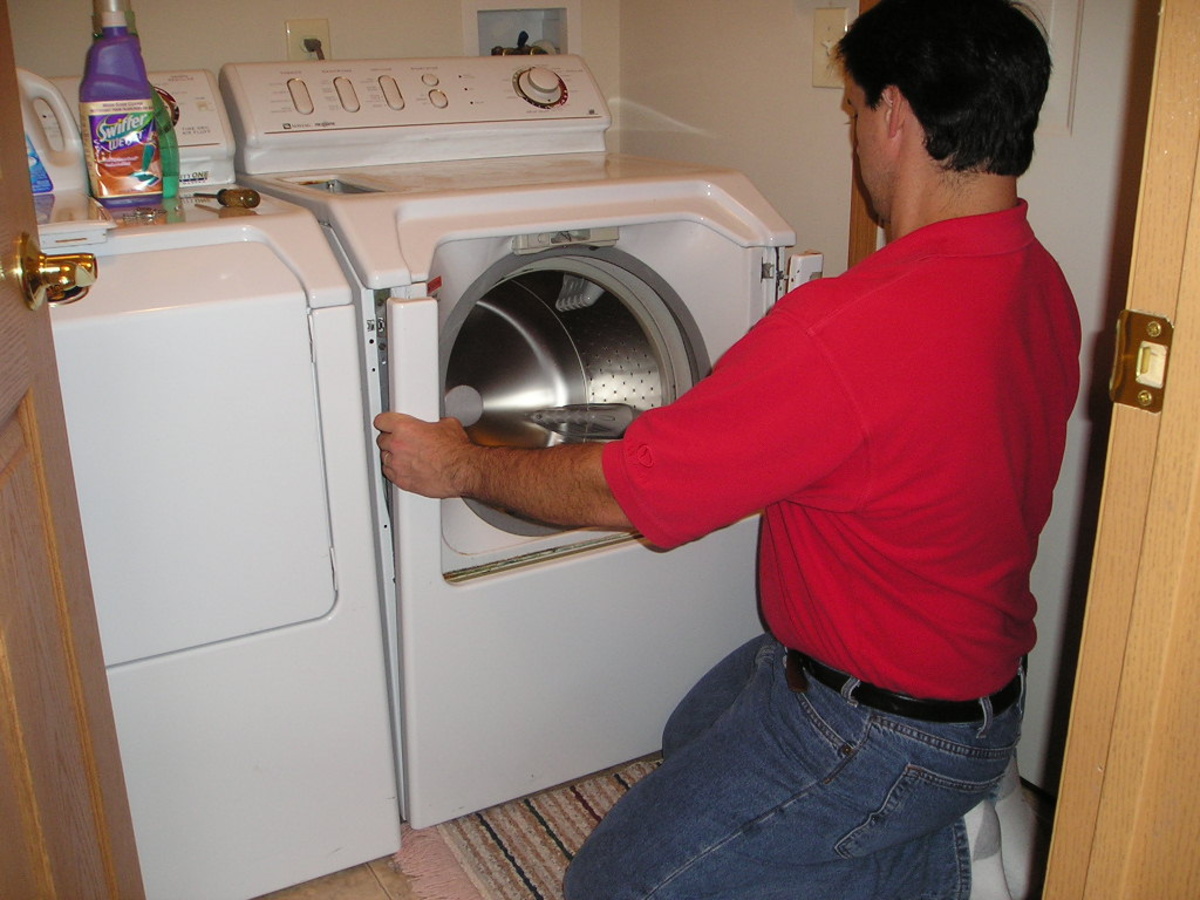

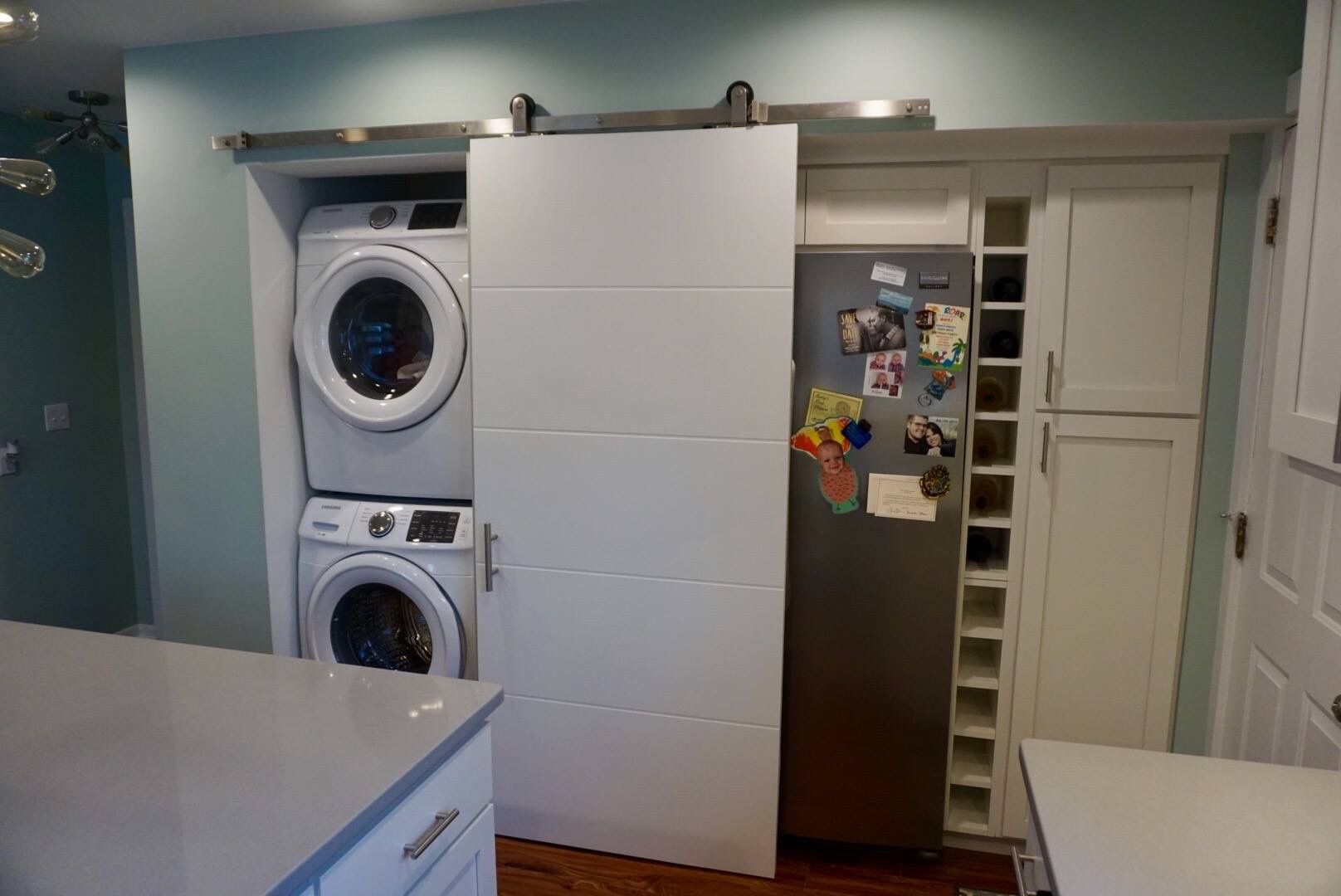
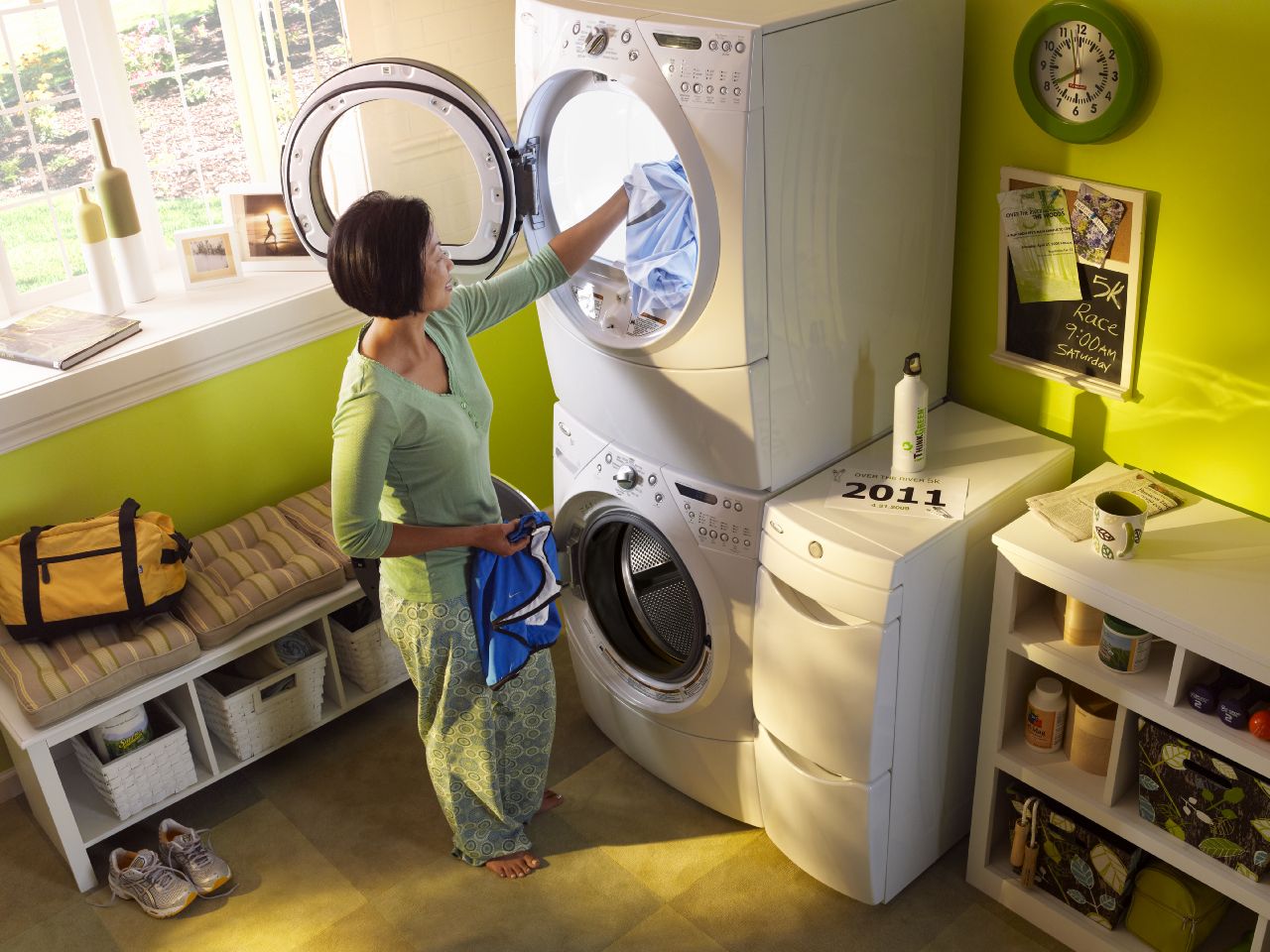
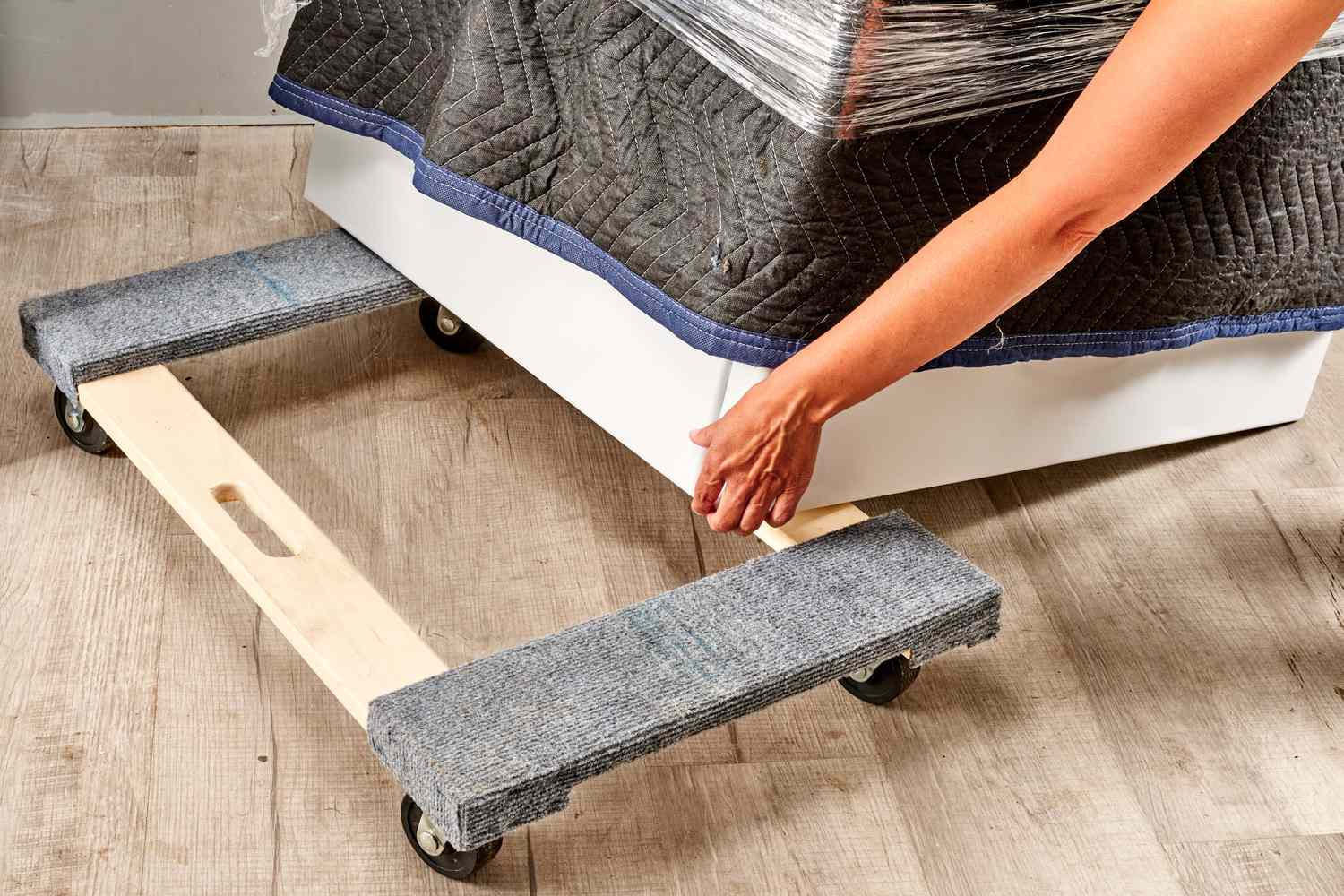
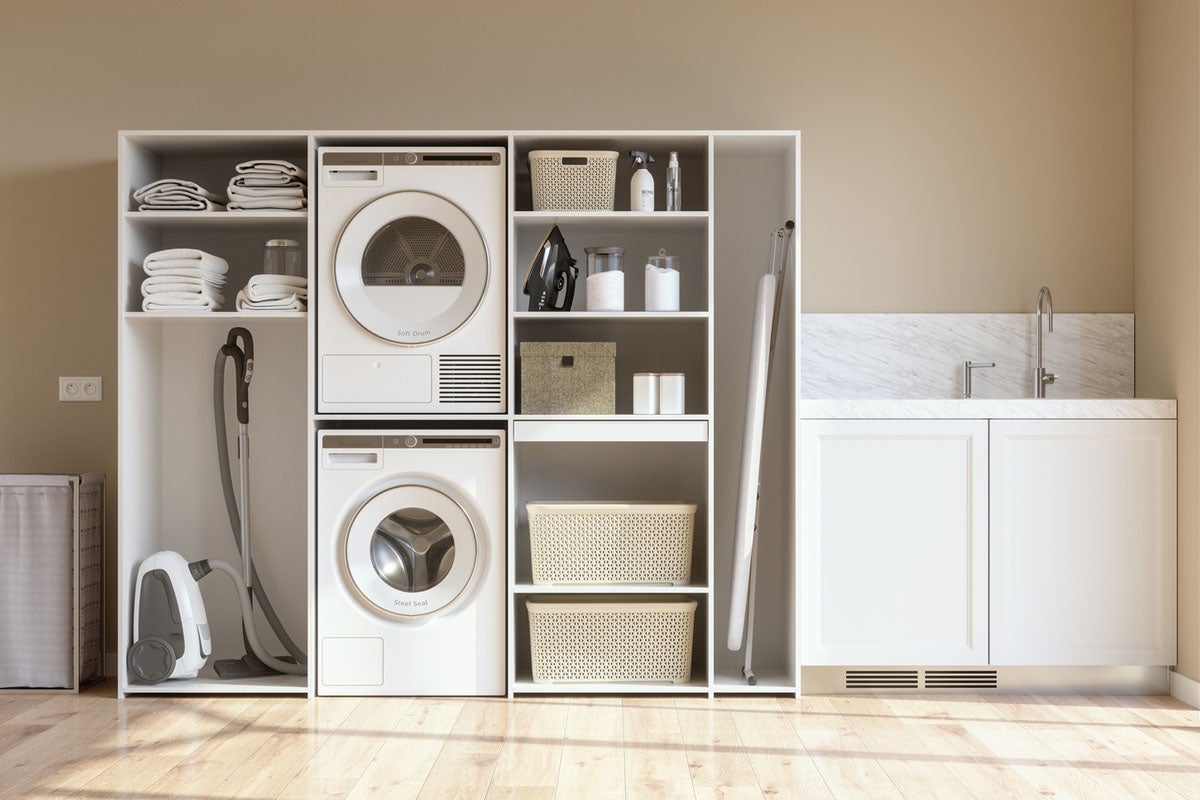
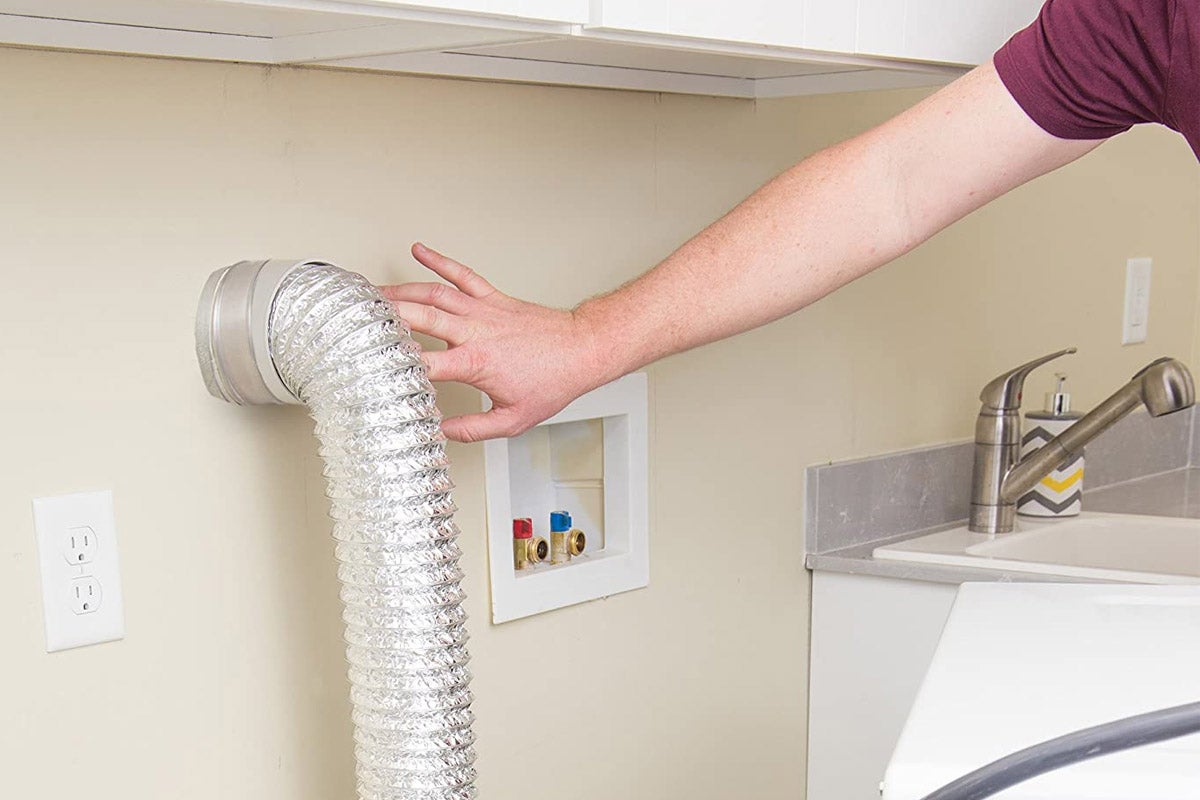
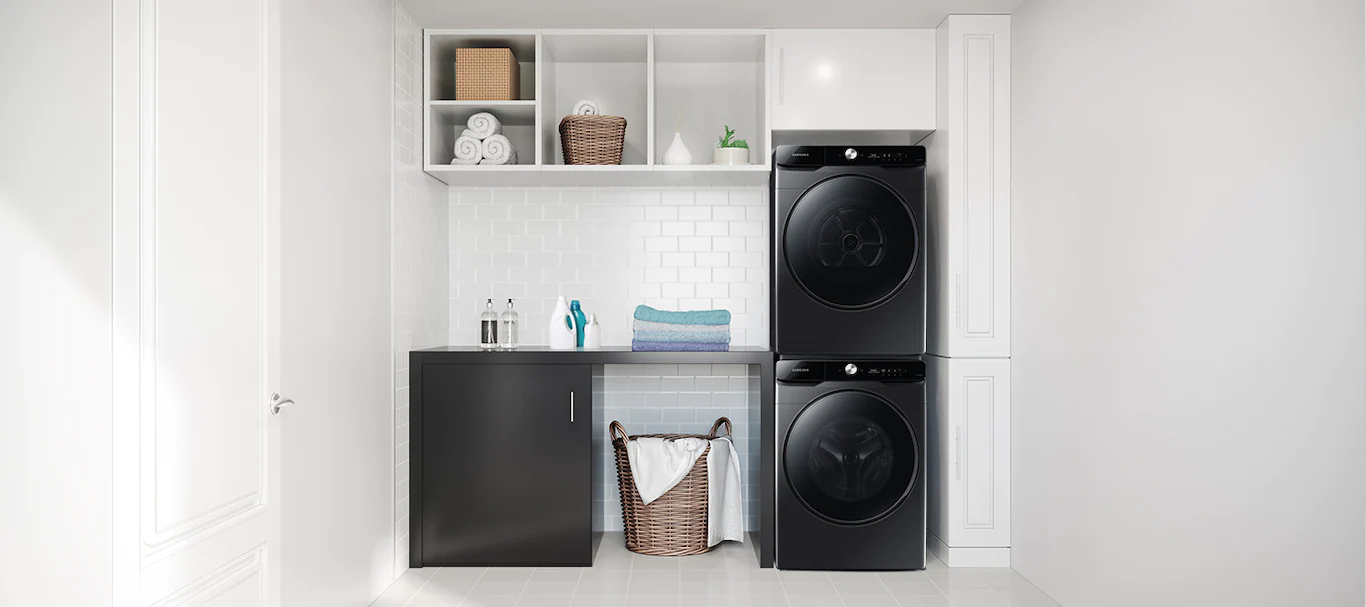


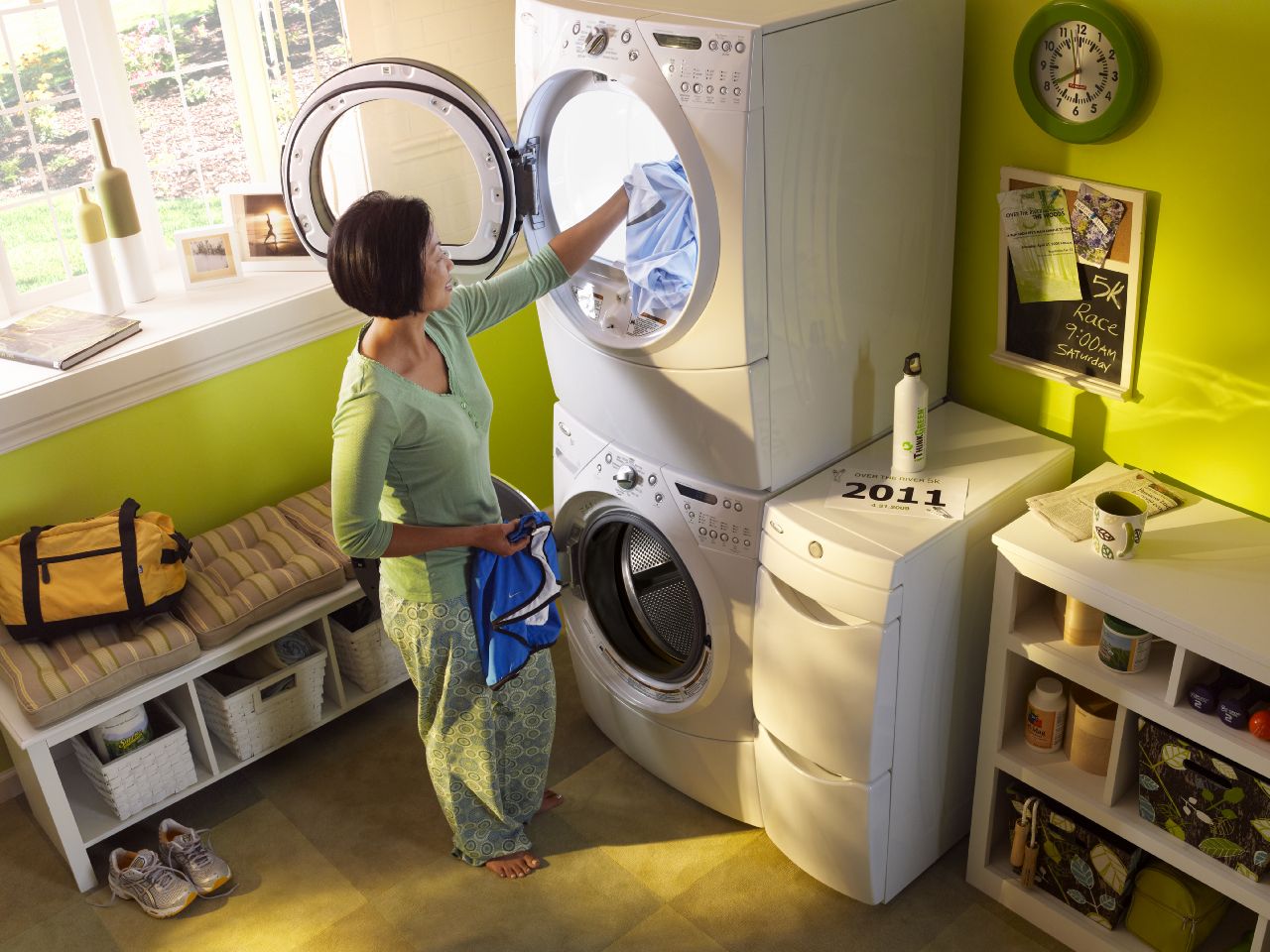
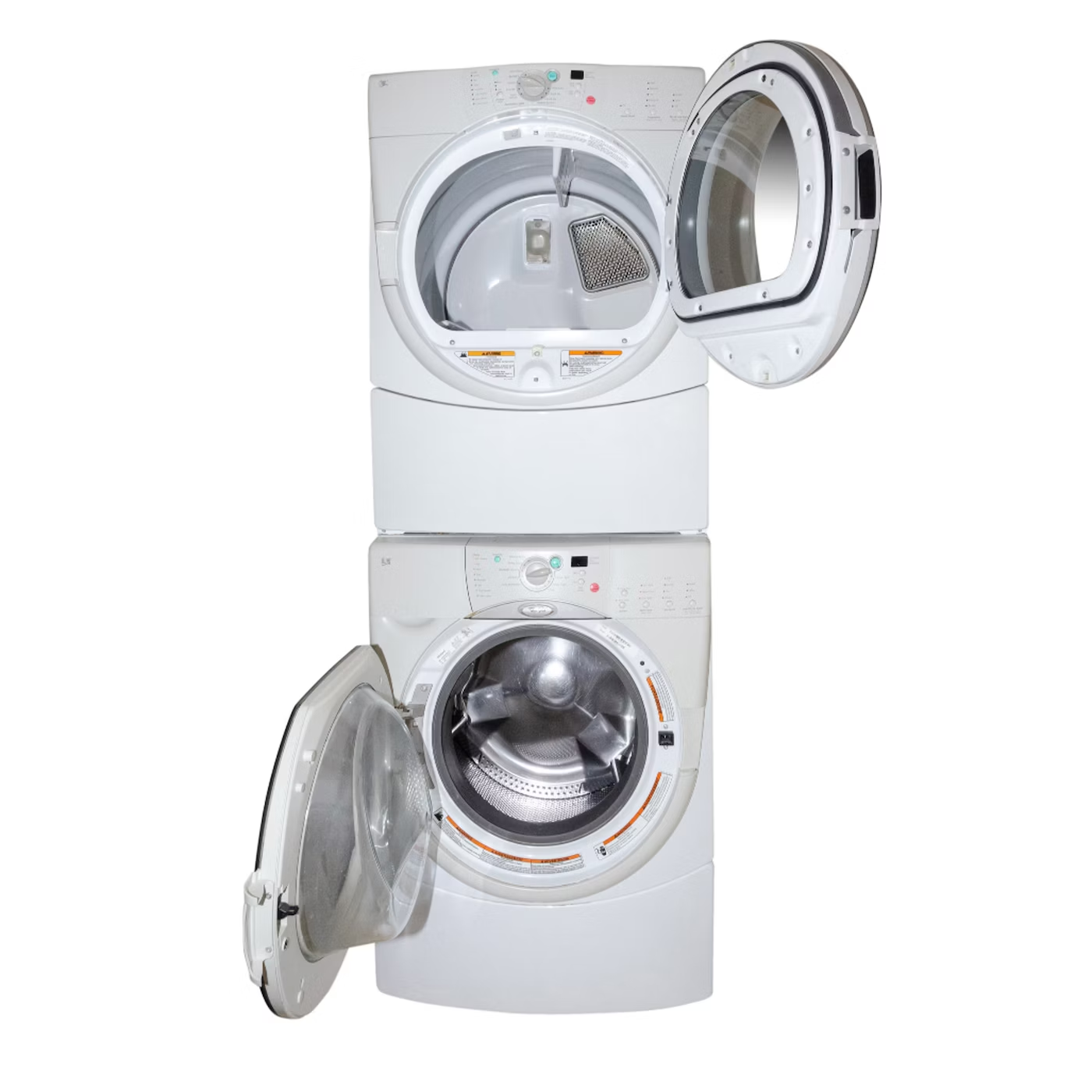
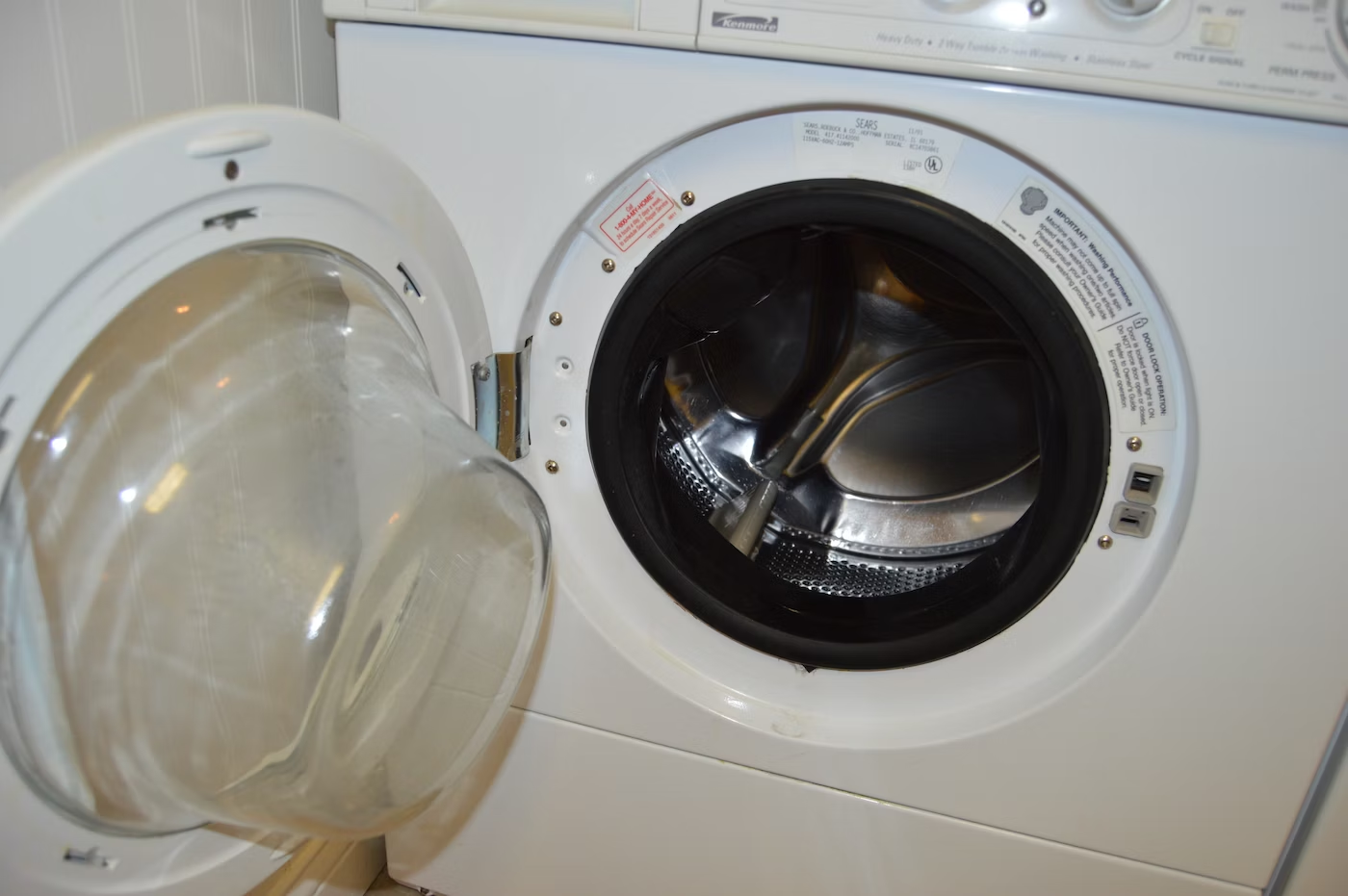

0 thoughts on “How Do You Stack Washer And Dryer”